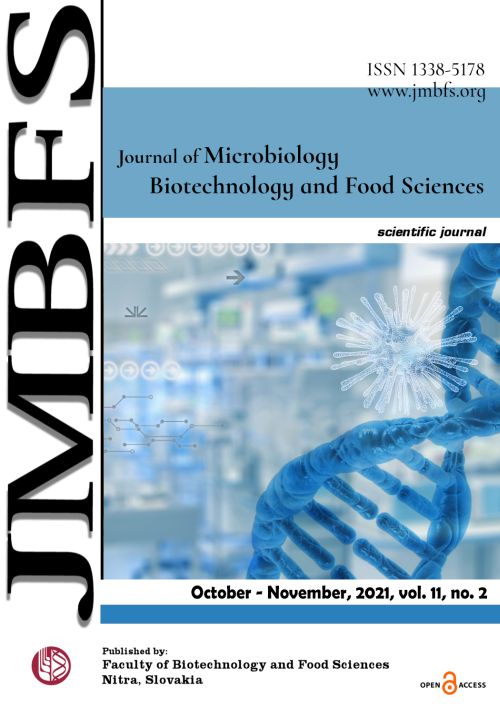EXTRACELLULAR GLUTAMINASE-FREE L-ASPARAGINASE FROM TRICHODERMA VIRIDE F2: PURIFICATION, BIOCHEMICAL CHARACTERIZATION AND EVALUATION OF ITS POTENTIAL IN MITIGATING ACRYLAMIDE FORMATION IN STARCHY FRIED FOOD
DOI:
https://doi.org/10.15414/jmbfs.4336Keywords:
Glutaminase-free L-asparaginase, Trichoderma viride F2, purification, kinetic properties, anti-oxidant activity, acrylamide reductionAbstract
L-asparaginase is an antitumor agent that suppresses cancer cell growth by eliminating L-asparagine from malignant cells. However, the intrinsic glutaminase activity is responsible for significant life-threatening adverse effects. Therefore, glutaminase-free L-asparaginase is far required to improve the therapeutic efficacy of L-asparaginase treatment. L-asparaginase was also used to combat the development of acrylamide in foods rich in carbohydrates cooked at high temperatures. Therefore, this study explores the purification and characterization of glutaminase-free L-asparaginase from Trichoderma viride F2 using agro-industrial residues as substrate. The enzyme was purified 36-folds with 688.1 U/mg specific activity and a final yield of 38.9% through ethanol precipitation, gel filtration on Sephadex G-100 followed by Sephadex G-200. The purified L-asparaginase is monomeric with a molecular mass of 57 kDa and exhibited optimum activity at pH 7.5 and 37 °C, which is relatively close to the human body's internal environment. The purified L-asparaginase showed high affinity and catalytic efficiency towards its natural substrate L-asparagine with Km and Vmax of 1.2 mM and 71.3 U/mL, respectively, and did not exhibit any intrinsic glutaminase activity. Among the salts tested, the univalent cations Na+ and K+ enhanced the activity by 145.7% and 163.5%, respectively, while the presence of Ag+ and Fe+3 displayed a considerable loss in activity. The enzyme showed a good anti-oxidant activity with IC50 of 66.1μg/mL and was able to convert L-asparagine exist in potatoes to L-aspartic acid and ammonia, suggesting its use as anti-carcinogenic agent and as potential food industry candidate to mitigate acrylamide content in starchy fried food.
Downloads
Downloads
Published
How to Cite
Issue
Section
License
Copyright (c) 2021 Ali Elshafei, Dina H El-Ghonemy

This work is licensed under a Creative Commons Attribution 4.0 International License.
All papers published in the Journal of Microbiology, Biotechnology and Food Sciences are published under a CC-BY licence (CC-BY 4.0). Published materials can be shared (copy and redistribute the material in any medium or format) and adapted (remix, transform, and build upon the material for any purpose, even commercially) with specifying the author(s).





